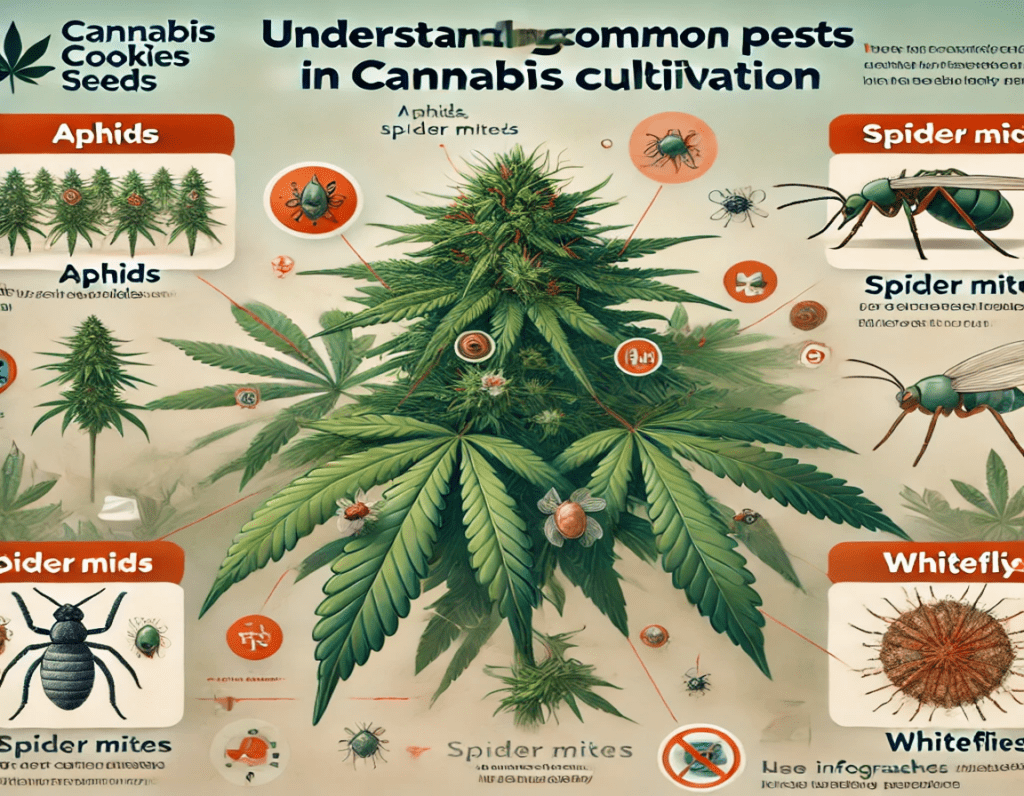
When growing Cannabis Cookies seeds, being aware of common pests that can threaten your plants is essential. Recognizing these pests early can save your crop from significant damage. Proper pest management techniques can ensure a successful harvest, ultimately enhancing the quality of your cannabis.
Aphids are small, soft-bodied insects that suck the sap from cannabis plants. They often cluster on the undersides of leaves and can reproduce rapidly, leading to significant infestations. Symptoms include curling leaves and sticky residue (honeydew) on the plant, which can attract other pests like ants and sooty mold.
Aphids come in various colors, including green, black, and brown. They can reproduce asexually, leading to rapid population growth in optimal conditions. A single aphid can produce dozens of offspring in a week, making it crucial to address infestations promptly. Monitoring your plants regularly can help you catch these pests early.
Aphids can weaken your plants by draining their sap, leading to stunted growth and reduced yields. They can also transmit viruses, further complicating pest management. The presence of aphids can lead to secondary infestations, as their honeydew attracts other insects.
Spider mites are tiny arachnids that can cause considerable damage by feeding on the plant’s chlorophyll. Infestations may lead to yellowing leaves and fine webbing on the plant. They thrive in hot, dry conditions, making early detection crucial.
These pests are almost microscopic, making them hard to spot. They appear as tiny red or yellow dots on leaves, and their webbing is often the first visible sign of infestation. Spider mites reproduce quickly, with a life cycle of just one week in ideal conditions. Adult females can lay hundreds of eggs in a short period.
Spider mites can significantly affect photosynthesis by removing chlorophyll from leaves. This leads to weakened plants and can ultimately impact overall yields. As populations grow, they can cause extensive damage, resulting in leaf drop and plant death if not controlled.
Whiteflies are small, moth-like insects that feed on the undersides of leaves, causing yellowing and wilting. They can also transmit diseases from plant to plant. Regularly inspecting your plants can help catch these pests before they become a serious problem.
Whiteflies are small, typically around 1-2 mm long, and are white and winged. They tend to congregate on the undersides of leaves and can reproduce quickly, leading to large populations if left unchecked. A whitefly infestation can develop rapidly, so vigilance is key.
Like aphids, whiteflies feed on the sap of cannabis plants, weakening them and leading to reduced growth and yield. They also produce honeydew, which can lead to sooty mold growth on the plant, further impairing photosynthesis.
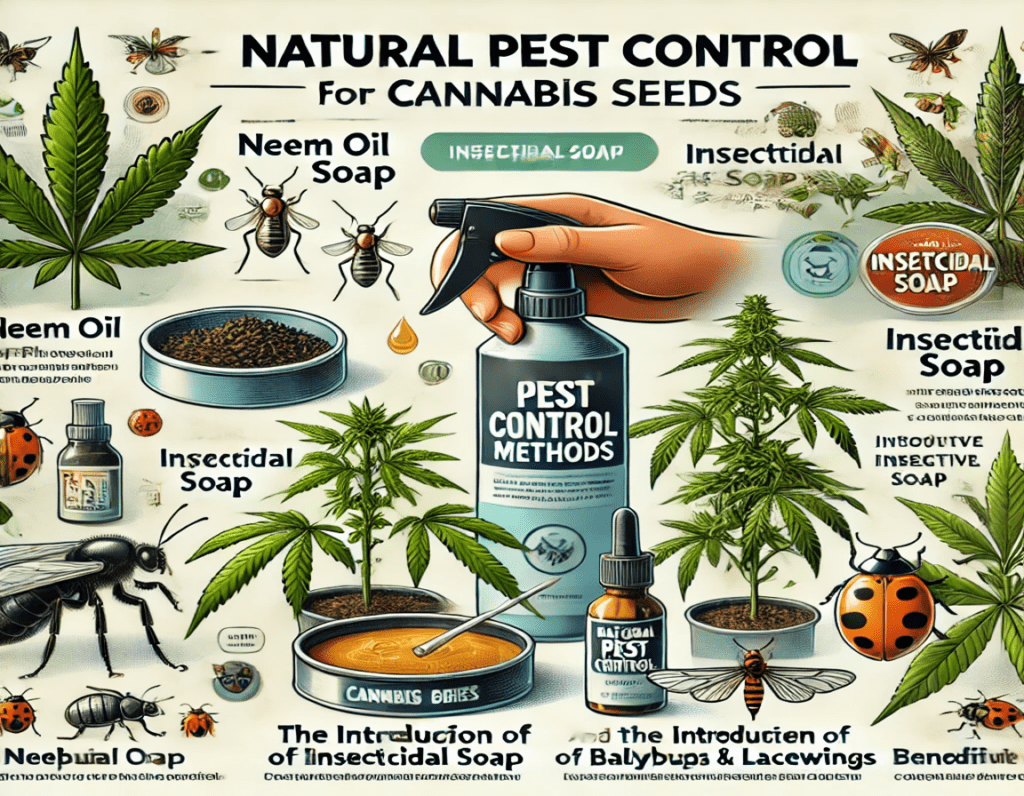
Utilizing natural pest control methods can effectively manage pests without harming your plants or the environment. Here are some effective DIY strategies:
Neem oil is a natural pesticide derived from the seeds of the neem tree. It disrupts the life cycle of pests and helps repel them. To use neem oil, dilute it with water and apply it to your plants using a spray bottle. Be sure to coat both the upper and lower surfaces of the leaves.
Mix 2 tablespoons of neem oil with a gallon of water and a few drops of liquid soap. Spray this mixture directly onto your plants, focusing on areas where pests are present. Neem oil works best when applied in the evening to avoid direct sunlight, which can degrade its effectiveness.
Neem oil not only repels pests but also disrupts their feeding and reproductive cycles, making it a powerful long-term solution. Regular applications can help keep pest populations under control.
Insecticidal soap is another effective solution for controlling soft-bodied insects like aphids and spider mites. You can make your own by mixing pure liquid soap with water (ensure it’s free of additives and fragrances). Spray it directly onto affected areas, ensuring thorough coverage.
Mix 2 tablespoons of pure liquid soap (not detergent) with a gallon of water. Test the solution on a small area before applying it to the entire plant to ensure it doesn’t harm the foliage.
Spray the solution on affected plants in the early morning or late evening when temperatures are cooler. This prevents the soap from evaporating too quickly and allows it to work effectively.
Introducing beneficial insects can help control pest populations naturally. Ladybugs and lacewings, for example, are known to feed on aphids and other harmful pests. You can purchase these insects from garden supply stores or online and release them into your grow area.
Ladybugs can consume hundreds of aphids daily, making them an effective natural pest control solution. Releasing them during the evening can help them acclimate to their new environment and start hunting pests right away.
Lacewing larvae, often referred to as “aphid lions,” are voracious predators of aphids and spider mites. They can be introduced similarly to ladybugs, and their presence can significantly reduce pest populations.
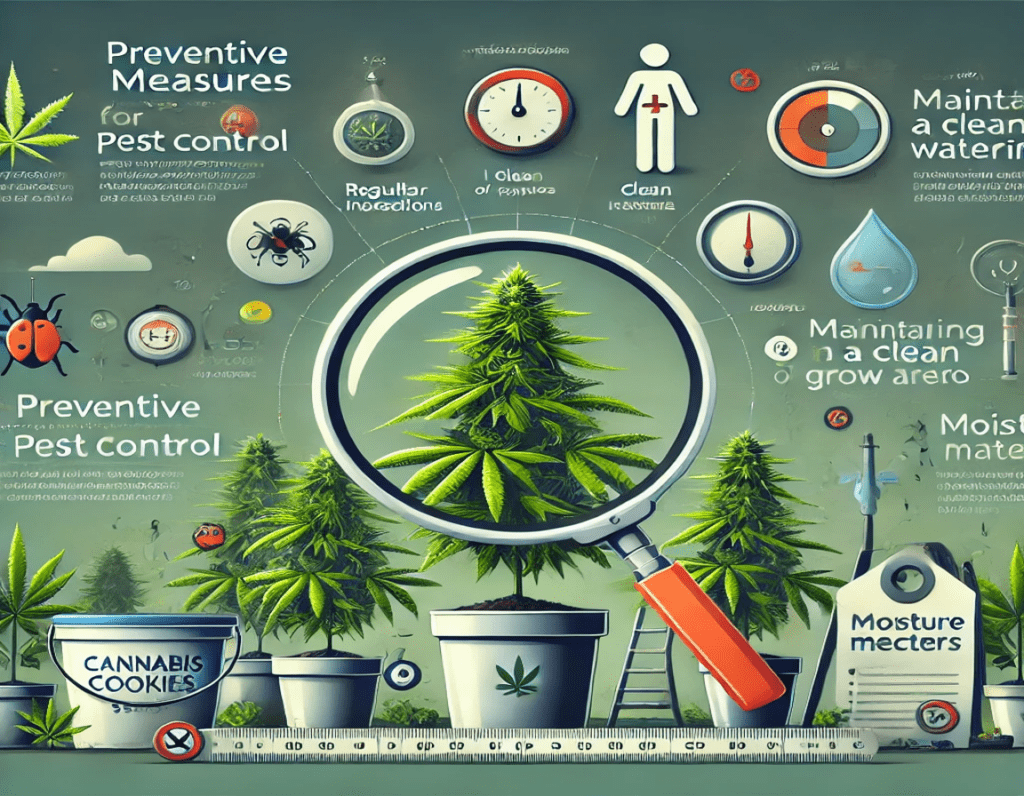
Prevention is key to maintaining healthy cannabis plants. Here are some best practices to minimize pest infestations:
Regularly inspecting your plants for signs of pests or damage can help catch infestations early. Check the undersides of leaves and the stems, and look for any unusual spots or webbing. Early detection allows for timely intervention.
Inspect your plants at least once a week, especially during the flowering stage when they are more vulnerable to pests. Keep a close eye during warm, humid weather when pests are likely to thrive.
Pay attention to changes in leaf color, texture, and any visible insects. If you notice any abnormalities, take immediate action to address the issue before it escalates.
Keeping your grow area clean and free of debris can help prevent pests from finding a home. Remove any dead leaves or plant material and ensure that your pots and trays are clean.
Regularly sanitize your tools and containers to prevent the transfer of pests. Consider using a diluted bleach solution or other disinfectants to clean surfaces and eliminate potential pest habitats.
Keep your grow area organized to reduce clutter, which can harbor pests. A tidy environment is less appealing to unwanted insects and can help improve air circulation around your plants.
Overwatering can create a humid environment conducive to pests. Ensure you are watering your plants correctly by allowing the top layer of soil to dry out between watering sessions. This practice can help deter pests like fungus gnats.
Establish a watering schedule based on your plants’ needs and the environment. Use pots with drainage holes to prevent excess water from accumulating and creating a damp environment that pests love.
Use a moisture meter to help gauge when to water. This can prevent overwatering and create a healthier root environment, reducing the likelihood of pest infestations.
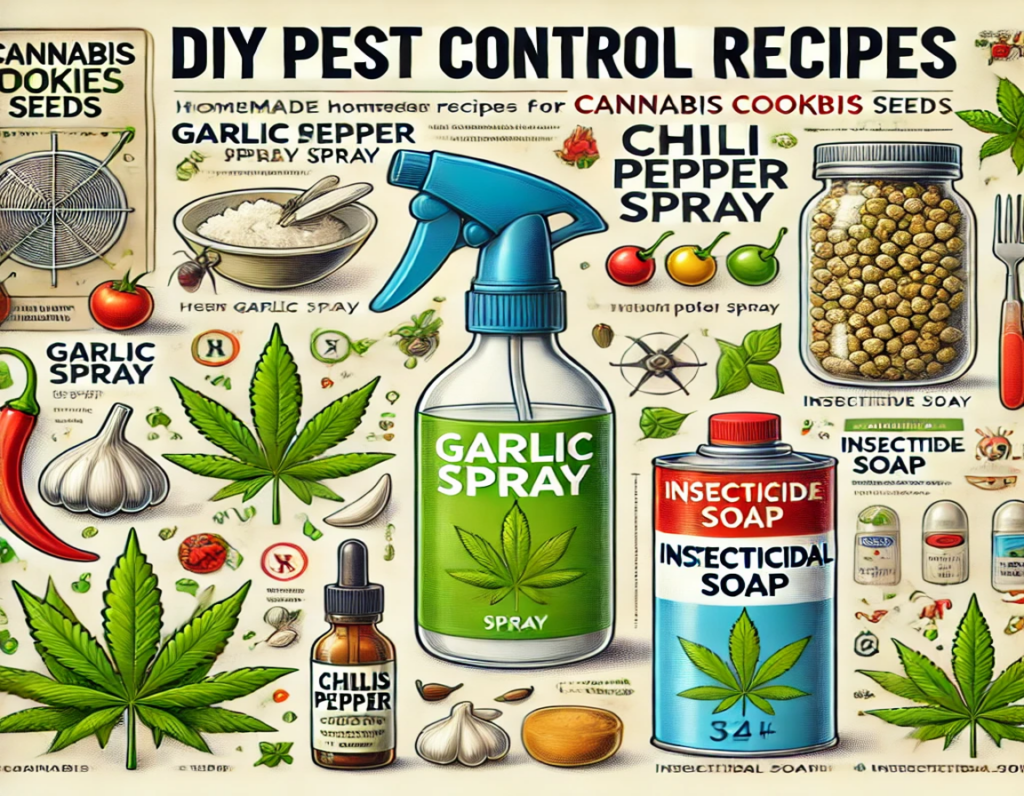
Creating your own pest control solutions can be both cost-effective and efficient. Here are a few DIY recipes you can try:
Garlic has natural insect-repelling properties. To make garlic spray:
Chili peppers can deter many pests due to their strong odor and heat. To make chili pepper spray:
Diatomaceous earth is a natural powder made from fossilized algae. It’s effective against soft-bodied insects. Sprinkle it around the base of your plants and on leaves to create a barrier against pests.
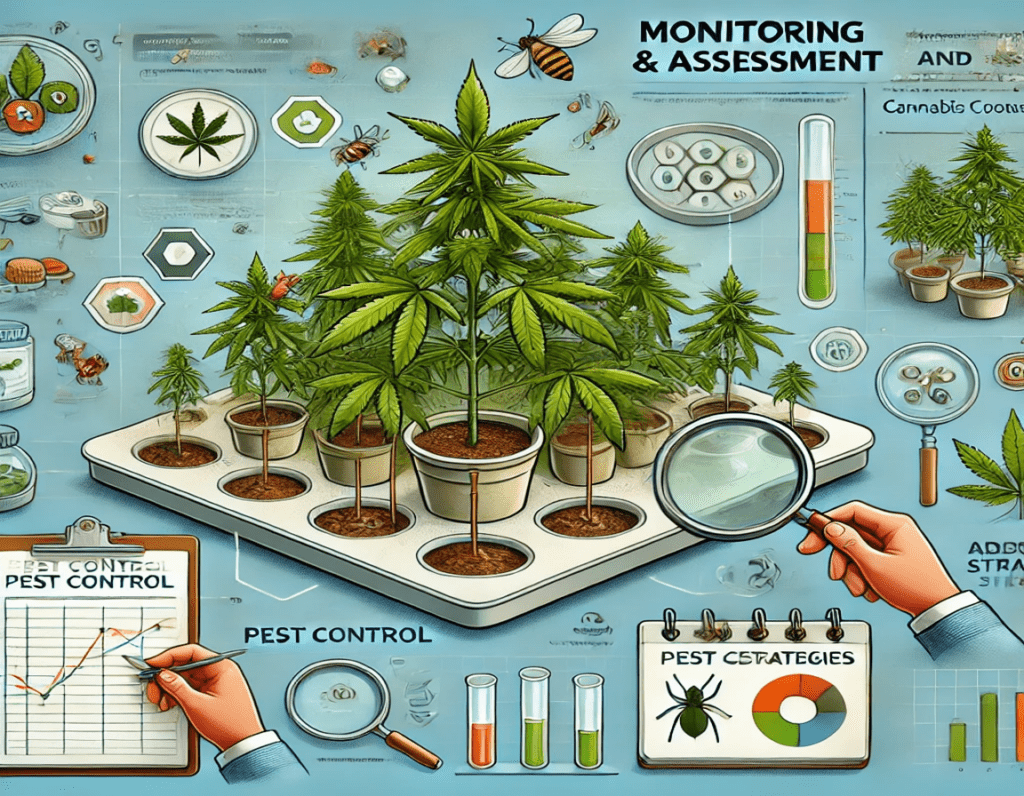
Once you implement pest control methods, it’s essential to monitor your plants for effectiveness. Here’s how to assess your pest control efforts:
Document your pest control activities, including the methods used and any observations. This journal can help you identify what works best for your specific growing conditions.
Note any changes in pest populations, plant health, and environmental conditions. This information can guide future pest management strategies.
Use your journal to reflect on past pest issues and the effectiveness of different control measures. This knowledge can improve your practices over time.
If you notice that certain pests persist despite your efforts, be prepared to adjust your approach. This may involve trying different solutions or increasing the frequency of applications.
Sometimes, pest control methods take time to show results. If a particular solution doesn’t work, don’t hesitate to try alternative methods or a combination of techniques.
If you’re facing persistent issues, consider reaching out to local gardening clubs or online forums for advice and support from experienced growers.
Look for signs like discolored leaves, webbing, sticky residue, or visible insects on your plants. Early detection is crucial for effective management.
Yes, neem oil is a natural pesticide and is safe for cannabis plants when used as directed. Always follow application guidelines to avoid harming beneficial insects.
Yes, combining methods can enhance effectiveness, but be cautious and test on a small area first to ensure no adverse reactions occur.
Regular inspections every week or two can help catch infestations early, especially during the flowering stage when plants are more vulnerable.
Reassess your approach, try different methods, and consider consulting with local experts or forums for additional advice.
Yes, pests like aphids, spider mites, and whiteflies can significantly damage cannabis plants if not controlled. Regular monitoring and preventive measures are essential.
We ship and deliver world wide via USPS and various couriers.
We offer a wide range of secure and anonymous online payment options.
We care about you, our customer. Please contact us with any questions or concerns.
Find out more about the benefits of being a loyal and regular customer.
WE ARE EVERY GROWERS ONE STOP SHOP TO ACQUIRE PREMIUM CANNABIS SEEDS FOR SALE IN THE USA, CANADA AND AUSTRALIA

Farmers Lab Seeds 2024, | All Right Reserved
Seeds are sold as novelty items, souvenirs, and collectibles. They contain 0% THC. We encourage our customers to check the legislation in their Country, State, Province, and Municipality prior to purchasing items from our store. We do not provide growing information.
All seeds are sold as hemp, and lab tested under 0.3% THC. This product is not for use by or sale to persons under the age of 21. This product should be used only as directed on the label. It should not be used if you are pregnant or nursing. Consult with a physician before use if you have a serious medical condition or use prescription medications. A Doctor’s advice should be sought before using this and any supplemental dietary product. All trademarks and copyrights are property of their respective owners and are not affiliated with nor do they endorse this product.
These statements have not been evaluated by the FDA. This product is not intended to diagnose, treat, cure or prevent any disease. Individual weight loss results will vary. By using this site, you agree to follow the Privacy Policy and all Terms & Conditions printed on this site. Void Where Prohibited by Law.